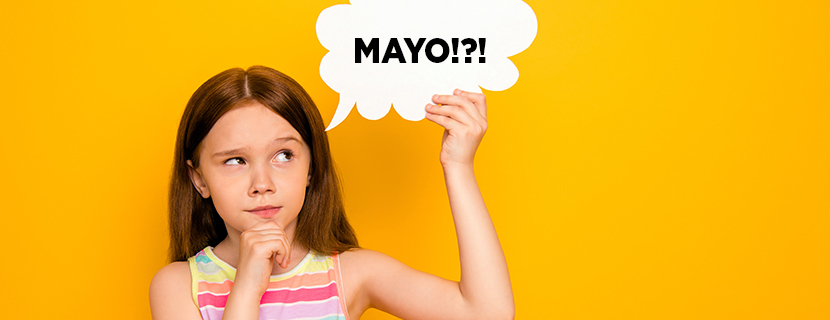Mayonnaise Lice Treatment
The concept of using mayonnaise as a treatment for head lice is a topic that has sparked interest and debate. Touted as a natural alternative to commercial lice treatments, mayonnaise is believed by some to be an effective means of suffocating head lice. This extensive guide delves deeply into the viability of mayonnaise as a lice treatment, evaluating its effectiveness, safety, and practicality.
Before delving into treatment methods, it’s important to understand what head lice are. These small, wingless parasites feed on human blood and are most commonly found on the scalp. They are known for their quick reproduction and resilience, making them a persistent problem, particularly among school-aged children.
The Theory Behind Mayonnaise for Lice Treatment
Mayonnaise is theorized to kill head lice by suffocating them. The thick, oily substance is believed to block the lice’s airways, thereby killing them. This theory is based on the premise that if the lice are deprived of air for a sufficient period, they will die.
Anecdotal Evidence
There are numerous anecdotal reports of mayonnaise being an effective lice treatment. Families and individuals who prefer natural remedies often turn to mayonnaise as an alternative to chemical treatments.
Lack of Scientific Backing
Despite these anecdotal reports, there is a significant lack of scientific research confirming the efficacy of mayonnaise in treating head lice. Most studies on lice treatments focus on commercially available products specifically formulated to combat lice.
Application Process
The process typically involves thoroughly coating the hair and scalp with mayonnaise, covering it with a shower cap, and leaving it on for several hours or overnight. The goal is to maintain the mayonnaise on the scalp long enough to potentially suffocate the lice.
Safety Considerations
While mayonnaise is generally safe as a food product, there are safety considerations when using it as a lice treatment. These include the risk of bacterial growth if mayonnaise is left at room temperature for an extended period and the potential for allergic reactions.
Advantages
- Accessibility: Mayonnaise is a common household item, easily accessible, and relatively inexpensive.
Disadvantages
- Unproven Efficacy: The effectiveness of mayonnaise in killing lice and especially nits is not scientifically proven.
- Messy and Uncomfortable: The application can be messy and uncomfortable, particularly for young children.
- Health Risks: There is a potential risk of salmonella exposure due to the raw eggs in mayonnaise, especially if left at room temperature.
Advantages of Professional Treatment
Professional lice treatment services, like those offered by Lice Clinics of America, provide scientifically proven, safe, and effective methods for eliminating head lice and nits. These treatments, performed by trained professionals, offer a higher success rate compared to home remedies like mayonnaise.
The AirAllé Treatment
The AirAllé device is an FDA-cleared treatment that uses controlled, heated air to dehydrate and kill lice and nits. This method is highly effective, fast, and safe, providing a reliable solution to lice infestations.
Head lice treatments in process
Preventive Measures Against Head Lice
Routine Checks
Regularly checking for head lice, especially in children, is crucial. Early detection can significantly simplify the treatment process.
Avoiding Head-to-Head Contact
Educating children about the importance of avoiding direct head-to-head contact can help prevent the spread of lice.
Personal Hygiene and Care
Maintaining good personal hygiene and not sharing personal items like hats, combs, and hair accessories are important preventive measures.
Conclusion
While mayonnaise is a popular home remedy for treating head lice, its effectiveness and safety are questionable. The messy application, potential health risks, and lack of scientific evidence make it a less reliable choice compared to professional treatments. For those dealing with head lice infestations, professional services like Lice Clinics of America offer safe, effective, and scientifically proven treatment options. These professional treatments, coupled with preventive measures, provide the best strategy for effectively managing and preventing head lice infestations.
What is the theory behind using mayonnaise for lice treatment?
Mayonnaise is thought to treat head lice by suffocating them. Its thick, oily consistency is believed to block the breathing apparatus of lice, potentially leading to their death. This method is suggested as a natural, chemical-free alternative to conventional lice treatments.
How effective is mayonnaise in treating head lice?
The effectiveness of mayonnaise in treating head lice is primarily supported by anecdotal evidence, with limited scientific research to back it up. Its ability to completely eliminate a lice infestation, particularly nits, is not well-documented in scientific literature and remains uncertain.
How is mayonnaise applied for lice treatment?
To use mayonnaise for lice treatment, the hair and scalp are coated with a generous amount of mayonnaise, which is then covered with a shower cap. It is typically left on for several hours or overnight, aiming to create an oxygen-deprived environment for the lice.
How does professional lice treatment compare to mayonnaise?
Professional lice treatments, such as the AirAllé treatment offered by Lice Clinics of America, are more effective and safer than mayonnaise. These treatments are scientifically proven and target both lice and nits, providing a comprehensive solution to lice infestations.
What is the AirAllé treatment, and how does it work?
The AirAllé treatment is an FDA-cleared method used by Lice Clinics of America. It involves using controlled heated air to dehydrate and kill both lice and nits. This professional treatment ensures a thorough resolution to lice infestations, unlike the uncertain efficacy of mayonnaise.
Why are professional treatments recommended over mayonnaise for lice removal?
Professional treatments are recommended over mayonnaise due to their proven efficacy and safety. These treatments are specifically developed to address both live lice and nits, offering a more comprehensive and effective approach to lice management.
What preventive measures can help in controlling lice infestations?
Preventive measures include regular hair checks, educating children about avoiding direct head-to-head contact, and not sharing personal items like combs and hair accessories. These practices can significantly reduce the risk of lice infestations.
